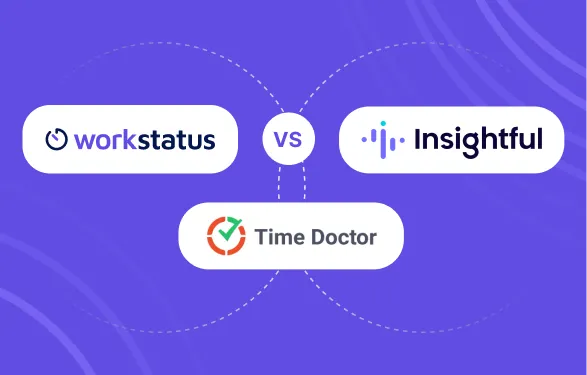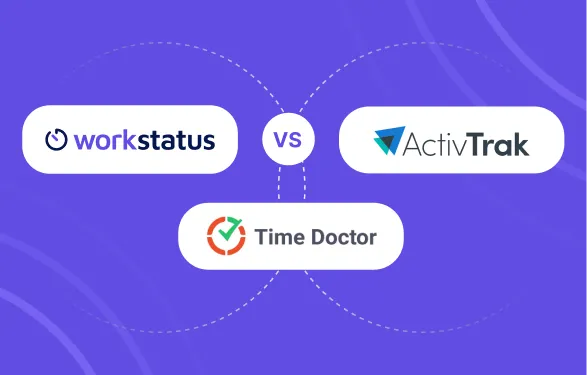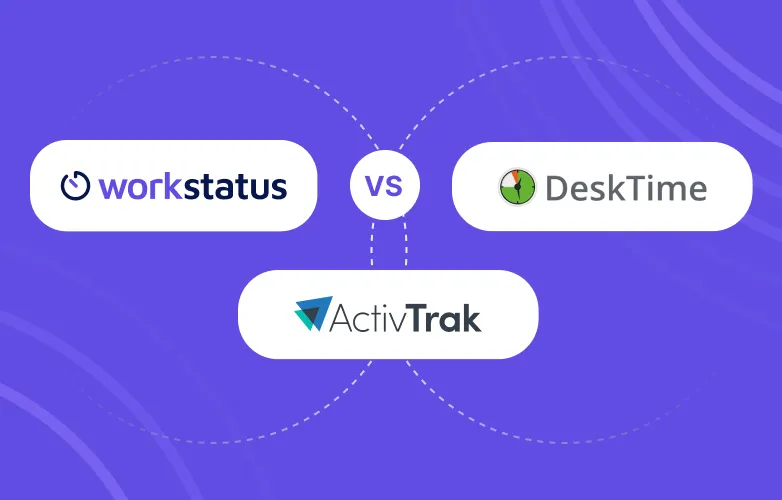Table of Contents
In today’s competitive business industry, all companies must implement workforce management and employee monitoring software to ensure productivity, compliance, and operational efficiency. These technologies allow organizations to monitor employee behavior, manage time and attendance, and protect critical information for effective operations.
However, selecting the right software is another challenging task, mainly due to the wide range of solutions available. This comparison blog will explore three prominent solutions: Workstatus, InterGuard, and Teramind. Besides, these platforms have diverse characteristics and advantages that can suit the needs of every organization.
Comparing and listing the various aspects of their performance would allow businesses to make wise decisions that correlate to their needs and objectives.
Let’s get into it!
Comparison Table
Here’s a detailed comparison table analyzing Workstatus, InterGuard, and Teramind across key aspects:
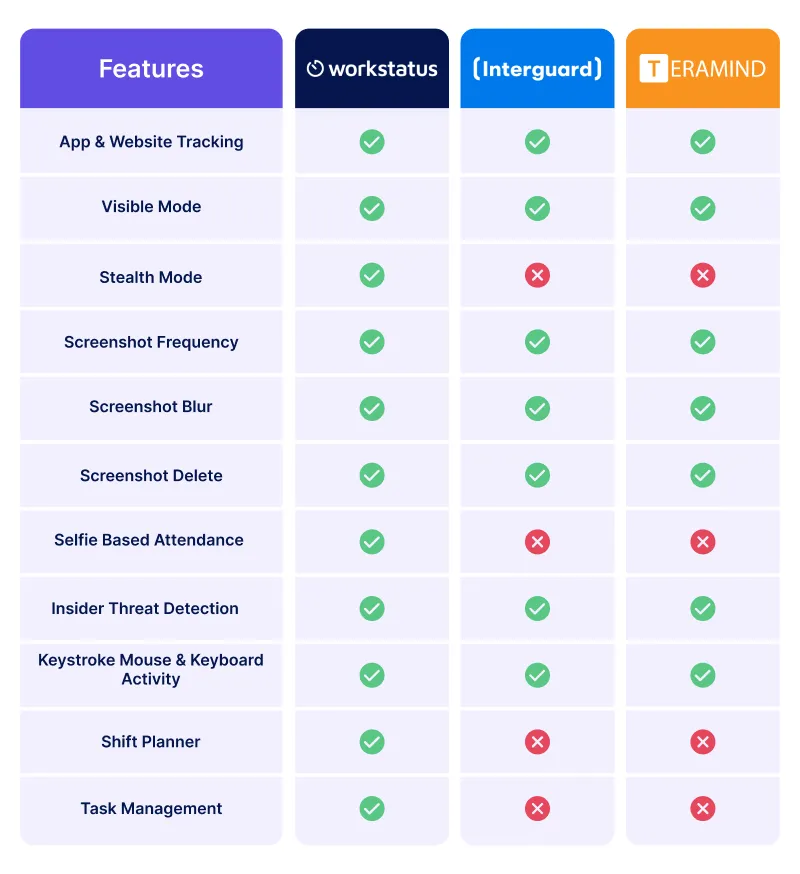
Ultimately, the best choice involves carefully assessing each solution’s features, pricing, ease of use, and customer support to determine the best fit for your organization.
Workstatus
Workstatus is an all-in-one workforce management software and employee tracking solution that improves organizational performance and efficiency. It allows companies to track employees’ activities, adjust for productivity, and clarify assignments for various worker groups.
Workstatus has an interface with easy-to-navigate features, comprehensive reports, and mobility, making it ideal for use in small to large companies.
Features
Time Tracking
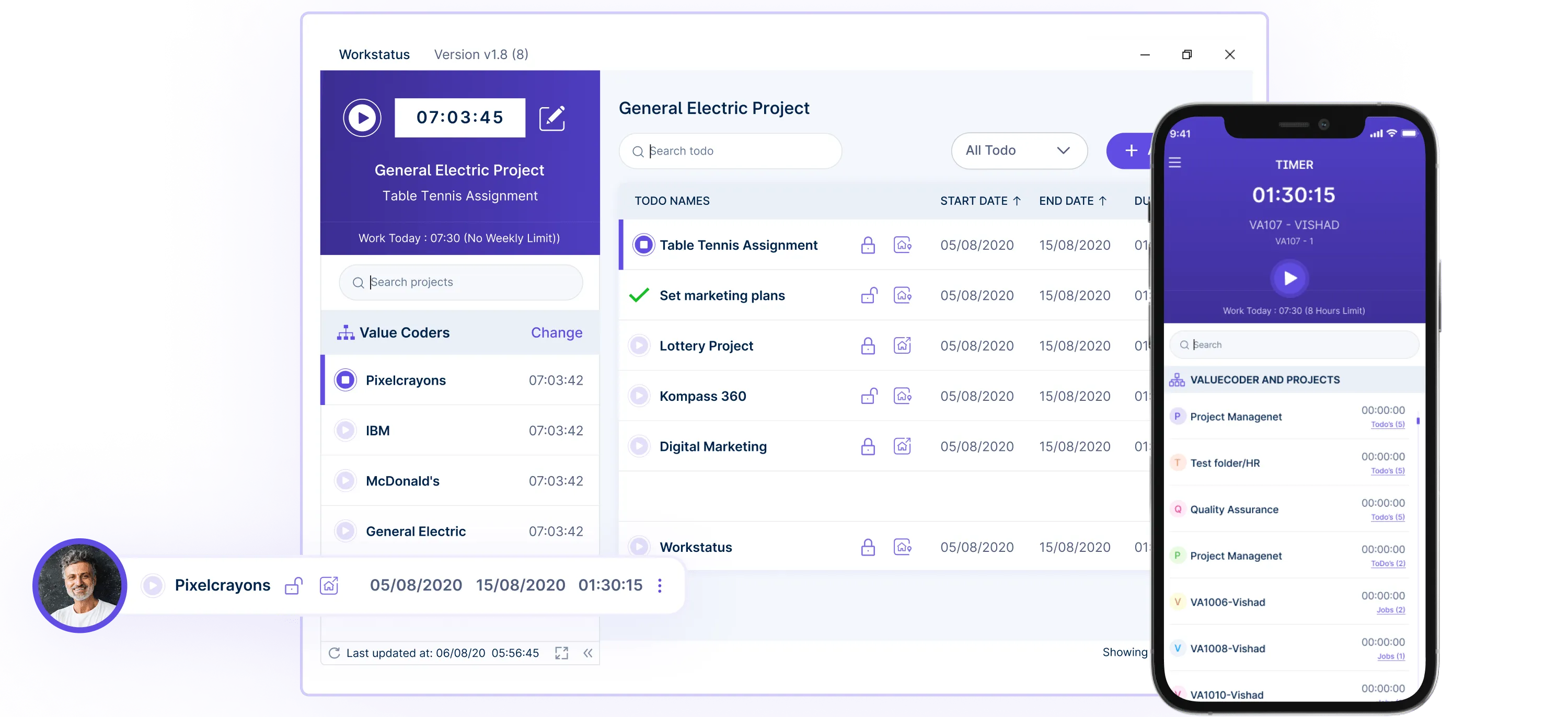
Workstatus is comparatively more equipped to cater to the need for effective time-tracking solutions for businesses to track employees’ time on different works and projects. It assists in efficiency improvement, billable hours, and overall time utilization management.
Attendance Management
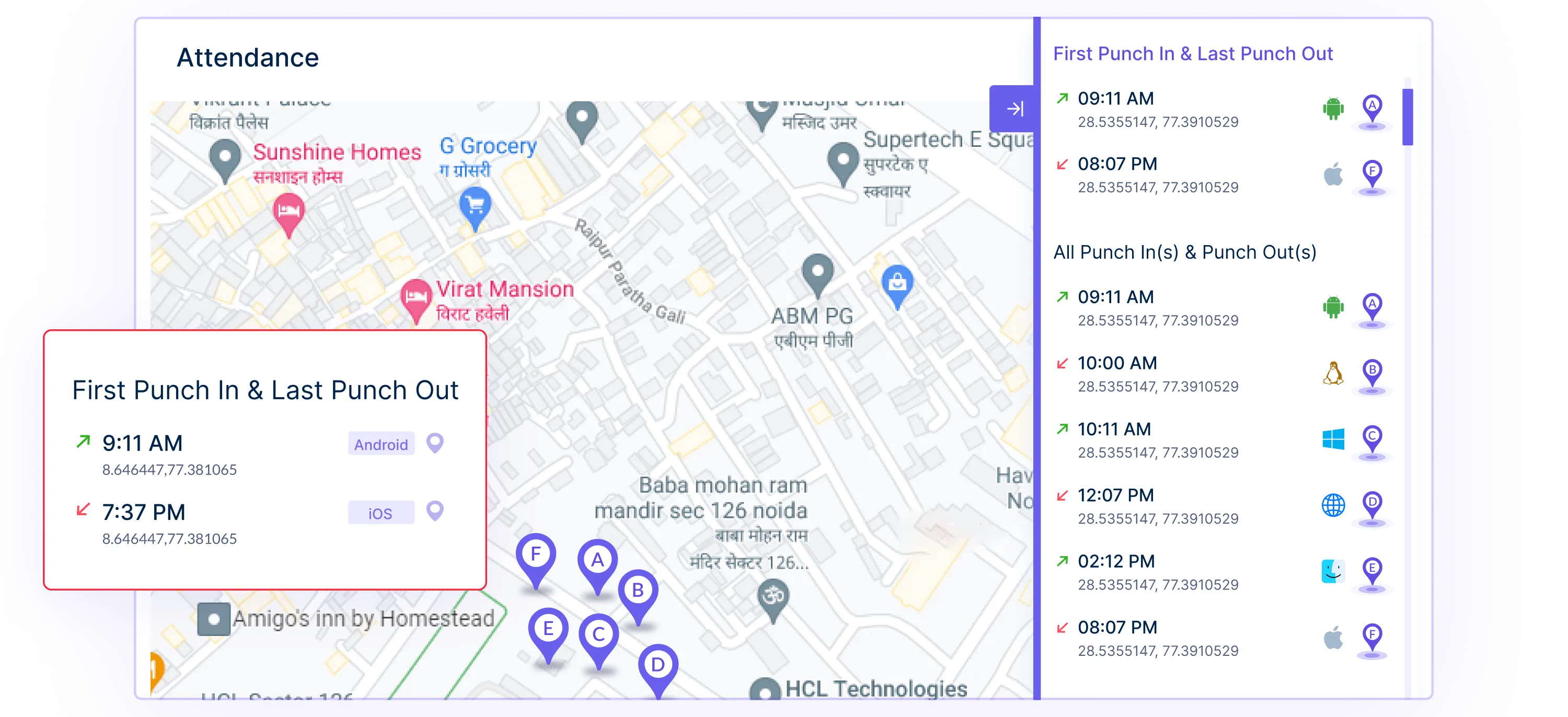
Workstatus provides extensive attendance management features, making monitoring employee attendance functionality easier. It makes it easier to track the time when employees clock in and out, how they apply for leave, and the overall attendance patterns, as it cuts down on administrative work and boosts precision.
Task Prioritization and Scheduling
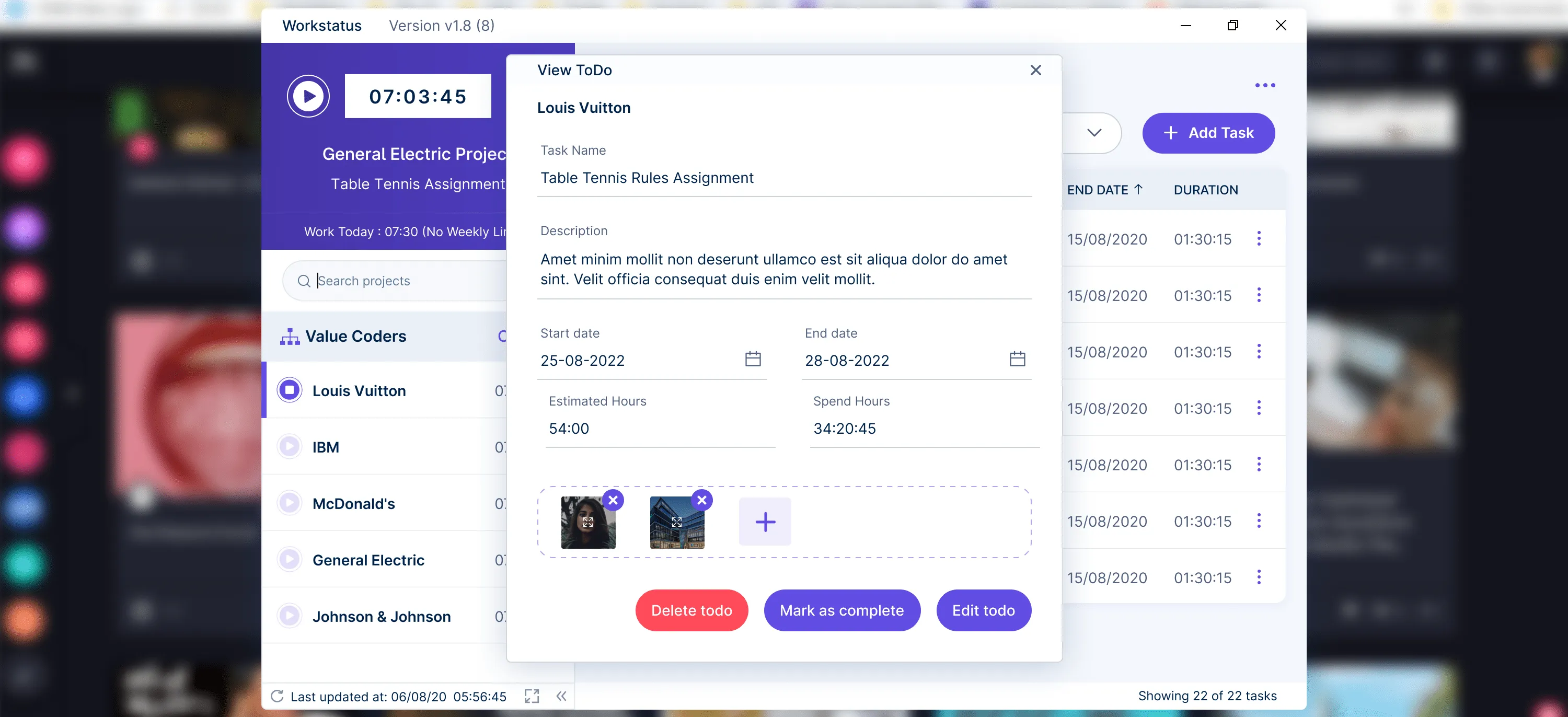
Workstatus helps arrange tasks so that the most important ones are handled at the appropriate time. This feature aids in managing work schedules, setting goals, and timely task execution, which in turn improves team productivity and project management.
Live Location Tracking
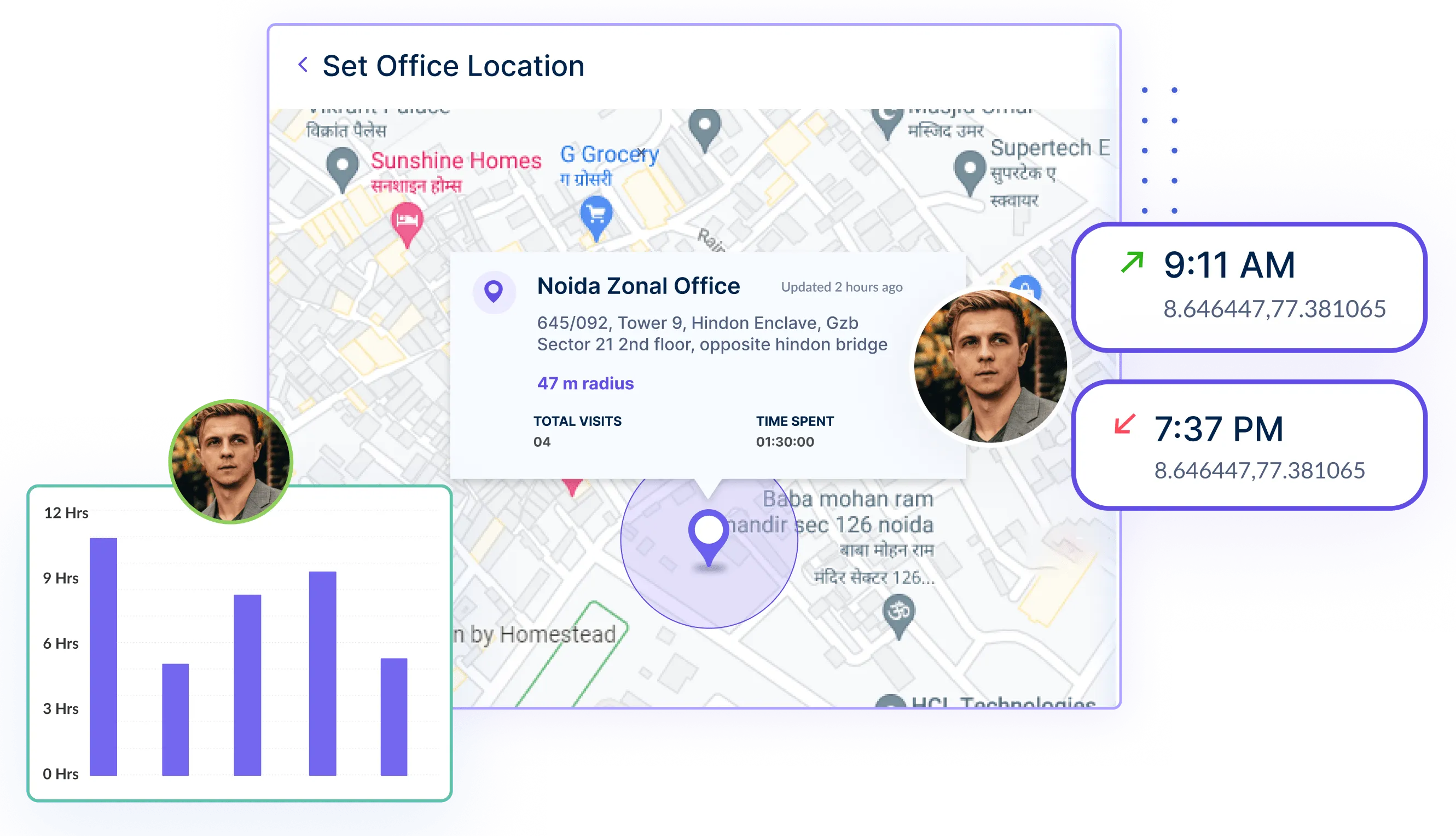
Workstatus has a live location tracking feature that can help managers provide real-time information about the location of their field employees. This is especially beneficial for managers with mobile or remote employees because it promotes discipline, security, efficiency, and resource utilization.
Benefits & Limitations
Benefits
- User-Friendly Interface: Workstatus has a simple user interface, so even an inexperienced user will be comfortable using the program.
- Comprehensive Features: It has a wide range of functions, such as tracking time, attendance, tasks, and even the real-time location of employees, which makes it suitable for different types of businesses.
- Real-Time Monitoring: Another benefit of the system is that it is real-time, thus enabling managers to monitor employees and their productivity from anywhere.
- Detailed Analytics: Workstatus offers complicated analytical and reporting features enabling enterprises to monitor and make decisions effortlessly and efficiently.
- Mobile Compatibility: The system is usable on mobile devices, making it particularly suitable for organizations with employees who work remotely or in the field.
- Customization Options: Workstatus has been designed to suit the needs of various businesses, making the product more effective and versatile.
Limitations
- Limited Integrations: As a self-claimed all-in-one HR platform, Workstatus may not fully integrate with all tools employed by some companies.
- Pricing: Workstatus basic or pro, depending on the features the business requires and the price of a software scalable by the business’s size, can be a disadvantage if the business has a limited budget.
Pricing
Free Plan
Cost: It costs $0 per user per month.
Features:
- Basic time tracking
- Attendance management
- Limited reporting and analytics
- Basic task management
Professional Plan
Cost: It costs $7 per user to access the software monthly.
Features:
- All included in the Free Plan
- Sophisticated working list and time management
- Live location tracking
- Customizable dashboards and reports
- API access and form-filling complex integrations
Enterprise Plan
Cost: Custom pricing
Features:
- All the features in the Professional Plan
- Custom feature development
- Dedicated account manager
- Comprehensive onboarding and training
- Advanced security features
Notes:
Free Trials: Workstatus also offers a trial, during which new users can test the platform’s features before subscribing to a paid plan.
Discounts: Annual billing is usually provided at slightly lower prices than monthly billing.
How Workstatus Helps Monitor Productivity?
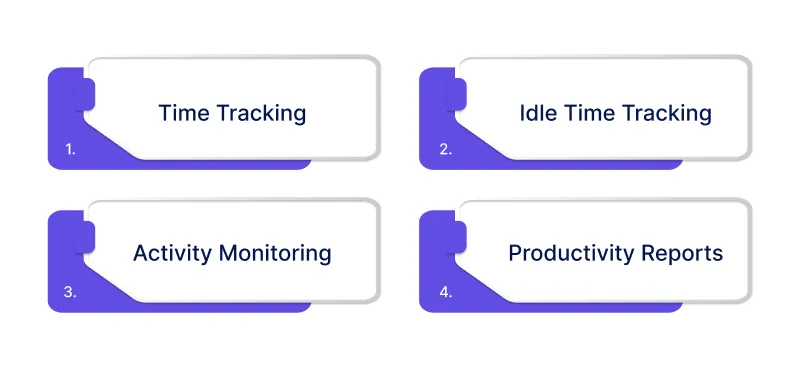
Here are some ways Workstatus helps monitor productivity:
- Time Tracking: Workstatus enables employees to record their time on tasks or assignments. This makes it easy for management and team leaders to see where employees work and whether something needs to be rectified.
- Idle Time Tracking: Workstatus can recognize if an employee’s computer is left unattended and not in more active use. This information can be useful to determine time management problems or possible distractions to employees.
- Activity Monitoring: Workstatus monitors employees’ productivity levels, mouse movements, keystrokes, and application usage. This data can be useful for observing employee engagement and interaction throughout the workday.
- Productivity Reports: Workstatus provides detailed reports on employees’ overall performance by comparing their working hours, active working hours, and productivity. These reports can assist in deciding on high-potential people and those who may require remedial training or extra guidance.
Interguard
InterGuard is an effective tool for monitoring and protecting company data. It has numerous tools for tracking, analyzing, and securing employee actions. It is especially trustworthy for its security-enhanced and robust monitoring and thus useful to businesses sensitive to data compliance and security. However, this model may not be preferable to some small organizations due to increased complexity and higher costs.
Features
- Employee Monitoring: InterGuard offers detailed workers’ monitoring software, which records all users’ actions, such as browsing the Internet and using applications, emails, and chats. This assists the company in analyzing how employees utilize their working hours and develop strategies to prevent time waste.
- Data Loss Prevention (DLP): InterGuard’s DLP functionalities prevent leakage or theft of the company’s important information. It tracks file transfers and email attachments and can even block or highlight certain activities that could lead to data loss.
- Web Filtering and Application Blocking: With this feature, users can block certain URLs and applications for their employees to access. Employers can limit social networks and other time-wasting sites and applications during working hours, reducing time wastage.
- Screenshot Capturing: InterGuard captures screenshots at fixed intervals or on the occurrence of specified events and offers pictorial proof of employees’ actions. This feature is most used when the user is working in compliance or chasing some suspect activity.
Benefits & Limitations
Benefits
- Comprehensive Monitoring: InterGuard provides numerous monitoring features and options that give a complete vision of employee performance to steer clear of violations and help increase efficiency.
- Strong Data Security: The DLP and security measures in the platform are strong, so the pick is good for any business that requires handling sensitive data and protection against data leakage.
- Customizable Alerts and Reporting: InterGuard also offers alerts and reports that can be personalized according to a company’s requirements.
Limitations
- Complexity: As a highly featured and functional software, InterGuard can be quite challenging to implement and administrate for small businesses or companies that do not have a dedicated IT team.
- Privacy Concerns: The level of monitoring InterGuard offers can become a concern to the employees, which may lead to distrust and dissatisfaction with the working conditions.
- Cost: InterGuard has advanced security features, making it expensive, especially for small businesses.
Pricing
InterGuard pricing mainly depends on the number of users and the features needed.
- Employee Monitoring Plan: It starts at just $9 per user monthly. It has simple features like monitoring computer activities, filtering websites visited, and taking screenshots of activities.
- Data Loss Prevention (DLP) Plan: This plan begins at around $15 per user per month and is designed for greater compliance needs. It includes all the features of the previous plan, as well as file tracking and blocking.
- Enterprise Plan: The cost is calculated individually, considering the requirements, the organization’s size, and other factors. This plan lists all features with remote control options, sophisticated reports, and priority support.
InterGuard usually offers a free trial, which enables organizations to assess the software’s efficiency before subscribing.
Teramind
Teramind is a smart employee monitoring and security tool that tracks user activity in real-time, analyzes behavior, identifies insider threats, captures screenshots, and prevents data leakage. It is supposed to offer a deeper understanding of employee actions, help improve security measures, and prevent the leakage of sensitive information.
Due to its flexible approach to policy settings and comprehensive reporting capabilities, Teramind will most benefit organizations with comprehensive surveillance and adherence procedures.
Features
- User Activity Monitoring: Teramind also offers Call Tracking, which records keystrokes, the websites employees visit, emails they send/receive, chat, file transfers, and applications they use. This assists companies in knowing how their employees spend their time and what activities are either wasteful or dangerous.
- Behavior Analytics: The platform uses big data behavior analytics to identify irregularities and possible security risks. Teramind can track user activities and compare them with previous activities to determine if there is any change in behavior due to insider threats or compliance violations.
- Insider Threat Detection: Regarding user awareness and education, Teramind’s insider threat detection components aim to deter data leakage and improper access. They check for unusual activities, such as unauthorized attempts to access prohibited files or systems, and issue alerts to the administrators.
- Screen Recording: Teramind takes snapshots of user desktops, which a manager can use to inspect events in depth. This feature is extremely helpful in research, enforcement, and training.
Benefits & Limitations
Benefits
- Detailed Reporting: The comprehensive reporting and analysis capabilities offer insights into performance and security, which help decision-making.
- Screen Recording: Screen recordings provide supplemental information for incident investigations and help verify compliance.
- Remote Control: Real-time device administration and security capabilities that can be accessed remotely, especially from the IT and security point of view.
Limitations
- Resource-Intensive: Continuous monitoring and analyzing functions can be expensive, negatively impacting the system, particularly the existing hardware.
- False Positives: Advanced behavior analytics might occasionally produce false positives, requiring more time to review and manage alerts.
- Customization Complexity: Although flexible policies are advantageous, configuring and optimizing such guidelines takes significant time and involves specialized IT personnel.
Pricing
Teramind’s pricing structure varies based on the number of users, business size & type, and the specific features needed:
- Starter: This plan starts at $15 per seat per month.
- UAM: It starts at $30 per seat per month.
- DLP: It starts at $35 per seat per month.
Use Cases and Best Fit
Workstatus
Use Cases
- Data Security and Compliance: Ensure regulatory compliance and protect sensitive data.
- Insider Threat Detection: Detect and mitigate insider threats.
- Productivity Monitoring: Monitor employee activities for productivity.
- Web and Application Control: Control access to non-work-related sites and apps.
Best Fit
- Enterprises: Robust security and compliance.
- Regulated Industries: Healthcare, finance, legal.
- IT Security Teams: Insider threat detection.
- Privacy-Focused Organizations: Detailed monitoring and control.
InterGuard
Use Cases
- Remote Workforce Management: Track work hours, attendance, and productivity for remote teams.
- Field Service Management: Live location tracking for mobile employees.
- Project Management: Organize tasks, prioritize workloads, and schedule projects.
- SMB Time Tracking: Affordable time and attendance tracking for small to medium-sized businesses.
Best Fit
- SMBs: User-friendly and affordable.
- Remote Teams: Supports remote work and live tracking.
- Project-Oriented Organizations: Time tracking and task management.
Teramind
Use Cases
- Advanced Security Monitoring: Prevent data breaches and ensure security.
- Remote Access and Troubleshooting: Manage and troubleshoot remote devices.
- Behavior Analytics and Anomaly Detection: Detect unusual behavior and threats.
- Comprehensive Employee Monitoring: In-depth activity and productivity insights.
Best Fit
- Large Enterprises: Extensive features for higher cost.
- Security-Conscious Organizations: Advanced threat detection and DLP.
- High-Security Industries: Finance, government.
- IT Departments: Remote management and incident response.
Factors To Consider When Choosing A Tool
Here are some factors to consider when choosing a tool:
Business Size and Needs
Assess to what extent the tool is relevant for small, medium, or large businesses. See your business’s specific challenges, such as managing remote employees, security issues, or regulatory demands.
Feature Set
Determine whether it can provide basic functions like tracking time, monitoring employees, managing tasks, and security. Other features might include behavior analysis, threat detection from within the network, and remote administration.
Ease of Use
Consider a simple and easy-to-follow tool interface. Evaluate the difficulty level of installing the tool and employees’ ability to adapt.
Integration Capabilities
Find out whether the tool integrates well with your current software and systems. If necessary, check API availability for further or custom field integration.
Cost
Take into consideration your budget. You should also compare the prices of different tools. The second step in establishing viability is comparing the costs incurred against the features/benefits offered in return.
Customer Support
See if customer support is available and whether it is through phone, email, or chat support options. Check out the reviews or request testimonials to learn about the quality of support offered.
User Reviews and Testimonials
Using the tool, look for reviews and testimonials indicating how other businesses and companies have fared with the tool. Ask for examples of cases or examples of clients who have used the tool.
Closing Thoughts
In conclusion, whether you opt for Workstatus, InterGuard, or Teramind depends on your preferences and needs.
All in all, Workstatus is ideal for organizations that wish to avoid a complicated method of workforce management and task tracking. InterGuard is preferable if you are looking to secure your data and meet compliance requirements. At the same time, Teramind is great for highly detailed monitoring and analysis of employees’ or suspects’ activity.
All these tools have advantages and disadvantages, so one should decide based on what is important to the business and use that tool.
FAQs
Ques: Which tool is best for small businesses?
Ans: Workstatus is best suited for small firms because of its simplicity, flexible pricing, and basic functionalities, which may include tracking time and attendance.
Ques: Can these tools be used to monitor remote employees?
Ans: Yes, all three tools can monitor remote employees from the comfort and convenience of their homes. Workstatus handles remote workers by employing additions such as live location tracking, while Teramind and InterGuard focus on detailed activity reporting and security settings.
Ques: How do these tools support project management and task scheduling?
Ans: Workstatus has features that allow the categorizing and organizing tasks, making it ideal for project-based teams. InterGuard and Teramind primarily aim at monitoring and security rather than organizing and completing tasks.



